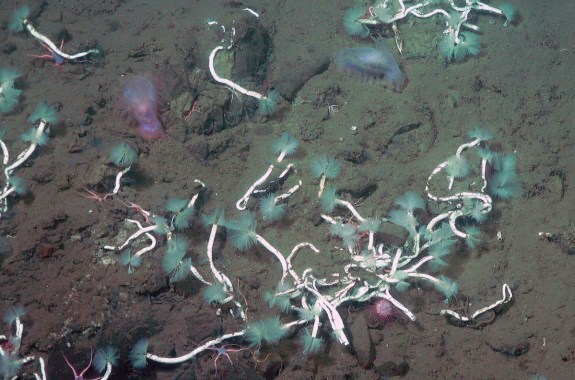

Dr. Shana Goffredi is a Professor of Biology at Occidental College. She considers herself an explorer at heart and is committed to uncovering the unique diversity of life on Earth. For 25 years, she has been travelling to the deep ocean, using submersibles, to study cooperative partnerships between bacteria and marine invertebrates. Dr. Goffredi has been involved in the discovery and description of some of the most iconic deep-sea animals to date, including giant deep-sea tubeworms and the yeti crab. These enigmatic symbioses have significantly contributed to biodiversity on our planet by generating new forms (ex. animal organs and tissues), new metabolisms, and even new evolutionary lineages.
At Occidental College, she teaches courses on Invertebrate Zoology, Microbial Diversity, and Symbiosis. Dr. Goffredi’s funding has come from the National Science Foundation, and her research team has published in journals such as PNAS, mBio, Environmental Microbiology and Science. Her B.S. is in Biology/Marine Science from the Univ. of San Diego and her Ph.D. is in Ecology, Evolution, and Marine Biology from UC Santa Barbara.
How These Spiders At The Bottom Of The Sea Run On Methane
With the help of methane-munching-microbes, these translucent sea spiders gobble up a potent greenhouse gas to stay alive.
16:45
Methane, It’s What’s For Dinner… In The Deep Ocean
Scientists discover two newly-described species of tube worms living on the seafloor that use bacteria to draw nutrition from methane.

